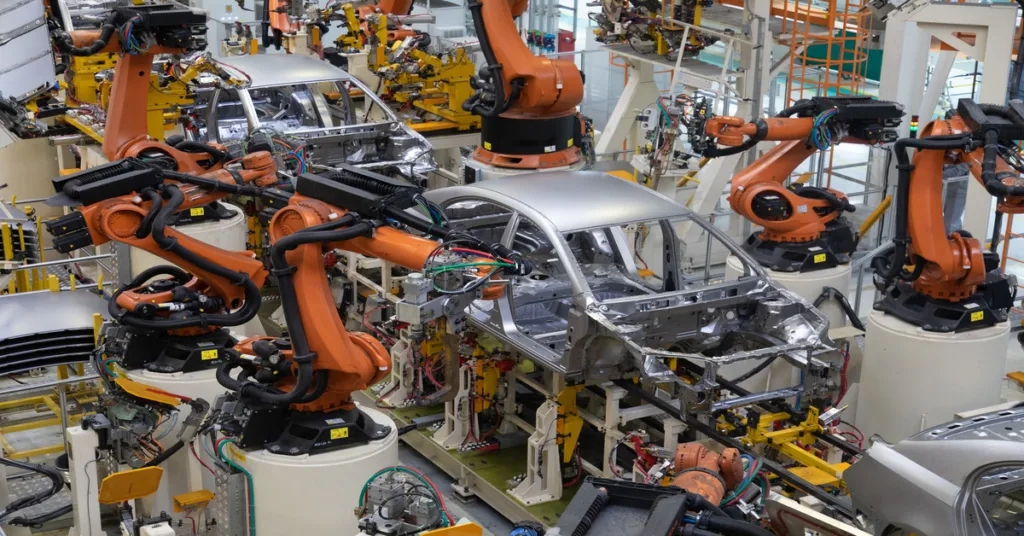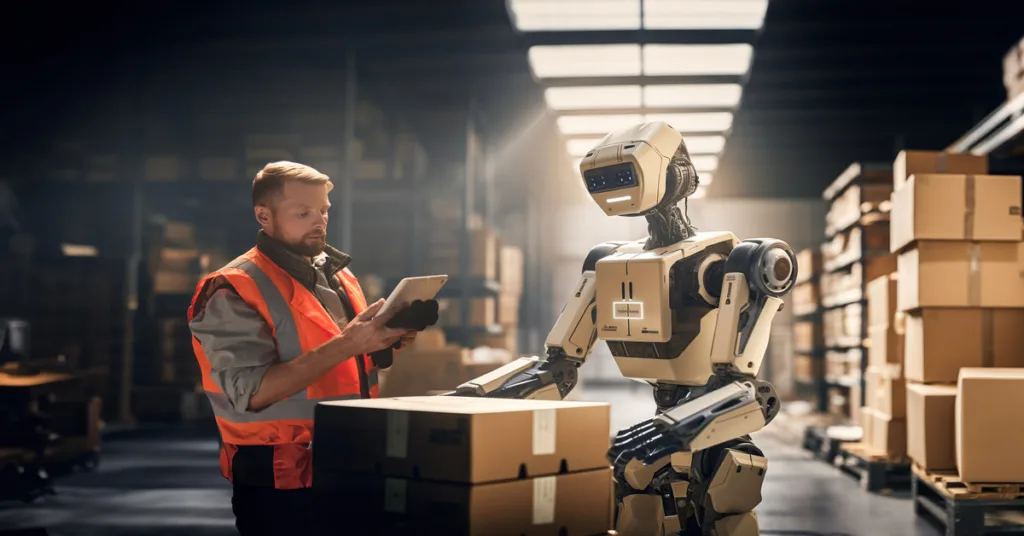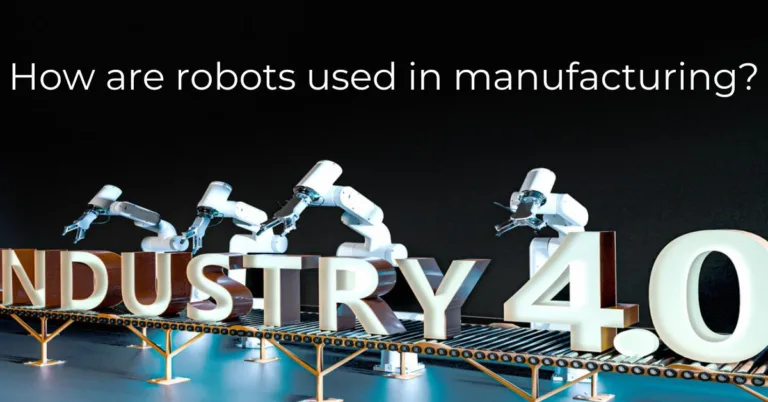How are robots used in manufacturing in 2024?
How are robots used in manufacturing in 2024? In the constantly evolving world of manufacturing, robots have emerged as key players on the shop floor. These sophisticated machines are transforming the way products are made, offering increased efficiency and precision.
How are robots used in manufacturing? From assembly lines to material handling, robots are utilized across various stages of production. With their ability to perform repetitive tasks with high speed and accuracy, robots are instrumental in streamlining operations and reducing human error. They can be programmed to perform complex tasks like welding, painting, and packaging, freeing up human workers to focus on more strategic and creative endeavors.
Moreover, robots are also enhancing workplace safety by taking on dangerous or physically demanding tasks. By assuming these roles, robots are reducing the risk of injuries and ensuring a safer work environment for employees.
In this article, we will explore the different applications of robots in manufacturing and their impact on productivity and profitability. Join us as we delve into the fascinating world of robotics and discover how these mechanical allies are revolutionizing the manufacturing landscape.
Table of Contents
History of robots in manufacturing
The use of robots in manufacturing dates back to the mid-20th century when the first industrial robots were introduced. The Unimate, developed by George Devol and Joseph Engelberger in 1961, was the first robot to be used in an industrial setting. This early robot was primarily used for material handling tasks and revolutionized the automotive industry.
Since then, robots have come a long way in terms of their capabilities and applications. Advancements in technology have enabled robots to perform more complex tasks with greater speed and accuracy. Today, robots are an integral part of the manufacturing process in various industries, including automotive, electronics, pharmaceuticals, and consumer goods.
Types of robots used in manufacturing
There are several types of robots used in manufacturing, each designed for specific tasks and environments. The most common types include:
- Articulated robots: These robots have multiple joints, giving them a high degree of freedom and flexibility. They are commonly used for tasks that require precise movements, such as welding, painting, and assembly.
- SCARA robots: SCARA stands for Selective Compliance Assembly Robot Arm. These robots have a horizontal arm that can move in a circular motion. SCARA robots are ideal for tasks that require fast and accurate pick-and-place operations, such as packaging and sorting.
- Delta robots: Delta robots are known for their speed and agility. They consist of three arms connected to a central base, allowing them to move quickly and accurately. Delta robots are commonly used for tasks that require high-speed picking and placing, such as food packaging and electronics assembly.
- Collaborative robots: Also known as cobots, these robots are designed to work alongside human workers. They are equipped with sensors and safety features to ensure safe interaction with humans. Collaborative robots are used in various manufacturing tasks, from assembly to material handling.
Benefits of using robots in manufacturing
The use of robots in manufacturing offers numerous benefits to companies, including:
- Increased productivity: Robots can perform tasks with high speed and precision, resulting in increased productivity and output. They can work continuously without fatigue, leading to shorter production cycles and higher throughput.
- Improved quality: Robots are capable of performing tasks with consistent accuracy, reducing the likelihood of human error. This leads to improved product quality and fewer defects, resulting in higher customer satisfaction.
- Enhanced workplace safety: By taking on dangerous or physically demanding tasks, robots are reducing the risk of injuries to human workers. This not only creates a safer work environment but also reduces workers’ compensation costs for companies.
- Cost savings: While the initial investment in robots may be significant, the long-term cost savings can be substantial. Robots can work around the clock, minimizing downtime and maximizing production efficiency. Additionally, robots can be programmed and reprogrammed for different tasks, eliminating the need for specialized machinery or equipment.
- Flexibility and adaptability: Robots can be easily reprogrammed to perform different tasks, making them highly flexible and adaptable to changing manufacturing needs. This allows companies to quickly adjust their production processes and respond to market demands.
Examples of industries using robots in manufacturing
Robots are widely used in various industries, revolutionizing the manufacturing process. Here are some examples of industries where robots are making a significant impact:
- Automotive: The automotive industry has been one of the early adopters of robots in manufacturing. Robots are used extensively in assembly lines, performing tasks such as welding, painting, and assembling components. They have improved production efficiency and quality control in the automotive sector.
- Electronics: The electronics industry relies heavily on robots for tasks that require precision and speed. Robots are used in the assembly of electronic components, printed circuit boards, and the testing of electronic devices. They have enabled faster production cycles and higher accuracy in the electronics manufacturing process.
- Pharmaceuticals: In the pharmaceutical industry, robots are used for tasks such as packaging, labeling, and quality control. They ensure the accuracy and consistency of medication packaging, reducing the risk of errors. Robots have also increased the efficiency of the pharmaceutical manufacturing process, allowing for faster production and improved inventory management.
- Consumer goods: Robots play a crucial role in the manufacturing of consumer goods, including appliances, furniture, and clothing. They are used for tasks such as material handling, assembly, and packaging. Robots have streamlined the production process, resulting in faster time-to-market and improved product quality.

How robots are transforming the manufacturing process
Robots are transforming the manufacturing process in several ways, revolutionizing traditional methods and increasing efficiency. Here are some ways in which robots are reshaping manufacturing:
- Automation of repetitive tasks: Robots excel at performing repetitive tasks with speed and precision. By automating these tasks, companies can free up human workers to focus on more strategic and creative endeavors. This improves overall productivity and allows employees to contribute in areas that require higher-level skills.
- Increased accuracy and precision: Robots are capable of performing tasks with consistent accuracy, reducing the likelihood of errors. This is particularly important in industries where precision is critical, such as electronics and pharmaceuticals. The high level of precision offered by robots ensures product quality and reduces the need for rework or quality control inspections.
- Improved efficiency in material handling: Robots are highly efficient in material handling tasks, such as picking, placing, and transporting materials. They can quickly and accurately move heavy or delicate objects, reducing the risk of damage or injury. This improves overall efficiency in the manufacturing process and reduces the time required for material handling.
- Enhanced data collection and analytics: Robots can be equipped with sensors and cameras to collect data and monitor various aspects of the manufacturing process. This data can be analyzed to identify bottlenecks, optimize workflows, and improve overall efficiency. By leveraging the data collected by robots, companies can make informed decisions and continuously optimize their manufacturing operations.
Challenges and considerations in implementing robots in manufacturing
While the use of robots in manufacturing offers numerous benefits, there are also challenges and considerations that companies need to address. Some of these include:
- High initial investment: The cost of acquiring and implementing robots can be significant, especially for small and medium-sized enterprises. Companies need to carefully evaluate the return on investment and consider factors such as the complexity of tasks, production volume, and labor costs before investing in robotics.
- Integration with existing systems: Integrating robots into existing manufacturing systems can be complex and time-consuming. Companies need to ensure compatibility with existing machinery, software, and processes. This may require additional investments in infrastructure or the need to modify existing systems.
- Skills and training: Working with robots requires specialized skills and training. Companies need to invest in training programs to ensure that their employees are proficient in operating and maintaining robots. This may involve collaboration with educational institutions or hiring specialized personnel.
- Safety considerations: Ensuring the safety of human workers when working alongside robots is crucial. Companies need to implement safety measures and protocols to prevent accidents and injuries. Collaborative robots, equipped with safety features and sensors, can minimize the risk of accidents in human-robot interaction scenarios.
Future trends in using robots in manufacturing
The future of robots in manufacturing looks promising, with several trends shaping the industry. Some of the future trends include:
- Advanced artificial intelligence: Robots equipped with advanced artificial intelligence capabilities will be able to analyze and learn from data, making them more adaptable and intelligent. This will enable robots to perform complex tasks and make decisions autonomously, further enhancing productivity and efficiency.
- Internet of Things (IoT) integration: Robots will be increasingly connected to the Internet of Things, allowing for seamless communication and coordination with other machines and systems. This will enable real-time monitoring and optimization of manufacturing processes, resulting in improved efficiency and predictive maintenance.
- Collaborative robotics: Collaborative robots will continue to gain popularity, working alongside human workers to enhance productivity and safety. These robots will be equipped with advanced sensors and machine learning capabilities, enabling them to adapt to human behavior and assist in a wider range of tasks.
- Customization and personalization: Robots will play a significant role in the manufacturing of customized and personalized products. With their ability to quickly adapt to different tasks and configurations, robots will enable companies to efficiently produce unique products tailored to individual customer preferences.
Training and skills required for working with robots in manufacturing
As robots become increasingly prevalent in the manufacturing industry, the demand for skilled workers who can operate and maintain these machines is growing. Some of the key skills required for working with robots in manufacturing include:
- Robot programming: The ability to program robots is essential for customizing their behavior and optimizing their performance. This includes skills in programming languages such as C++, Python, or specific robot programming languages.
- Mechanical and electrical knowledge: A strong understanding of mechanical and electrical systems is crucial for troubleshooting and maintaining robots. This includes knowledge of sensors, motors, controllers, and robotic arms.
- Data analysis and analytics: With the increasing use of sensors and data collection in robotics, the ability to analyze and interpret data is becoming important. Skills in data analysis and analytics tools are valuable for optimizing robot performance and identifying areas for improvement.
- Collaboration and communication: As robots often work alongside human workers, the ability to collaborate and communicate effectively is essential. This includes understanding human-robot interaction principles and ensuring the safety and well-being of human workers.

Conclusion: The future of robots in manufacturing
Robots have become indispensable in the manufacturing industry, revolutionizing production processes and increasing efficiency. From assembly lines to material handling, robots are utilized across various stages of production, offering increased productivity, improved quality, and enhanced workplace safety.
The future of robots in manufacturing looks promising, with advancements in artificial intelligence, IoT integration, and collaborative robotics. These advancements will further enhance the capabilities of robots, enabling them to perform more complex tasks and adapt to changing manufacturing needs.
As robots continue to play a significant role in manufacturing, companies need to invest in the necessary skills and training to harness the full potential of these mechanical allies. By embracing robotics and leveraging their capabilities, companies can stay competitive in the evolving manufacturing landscape.

